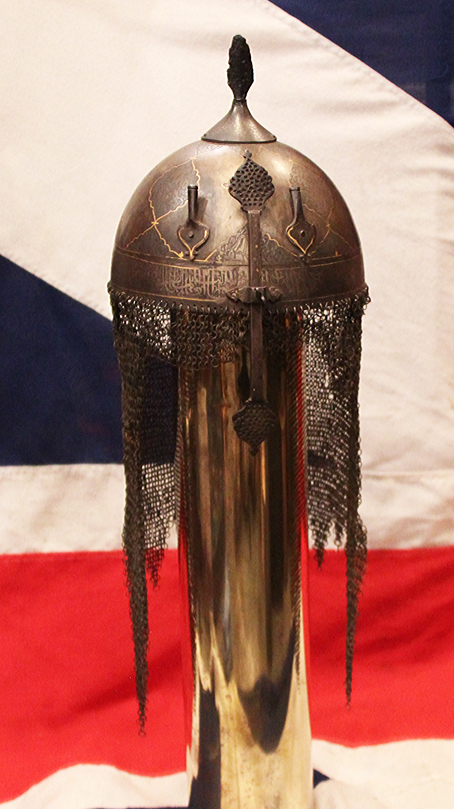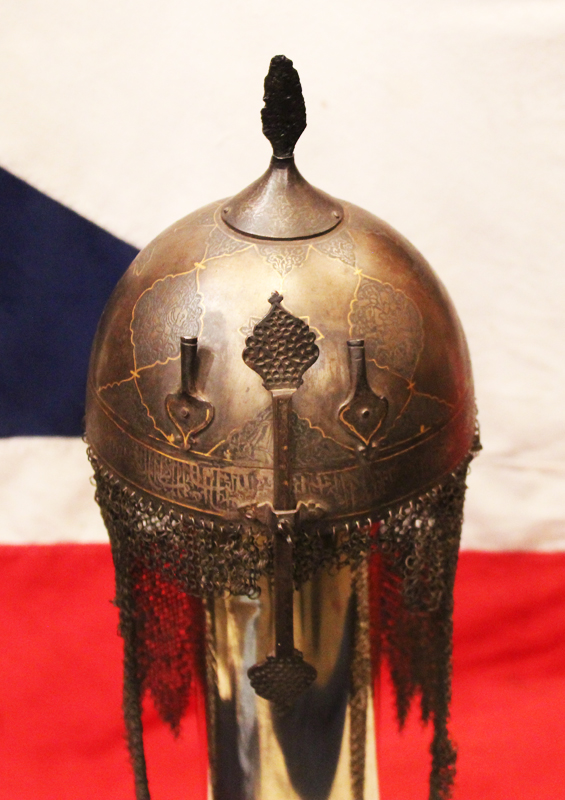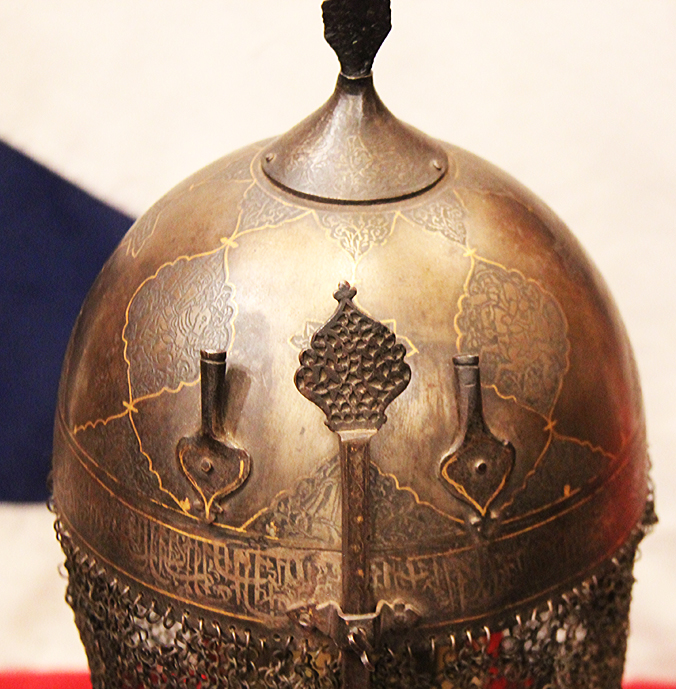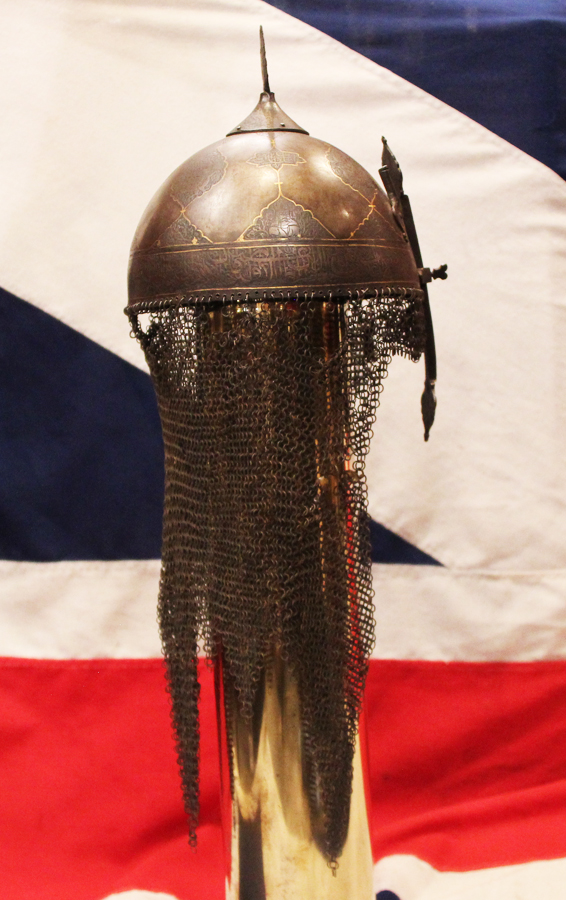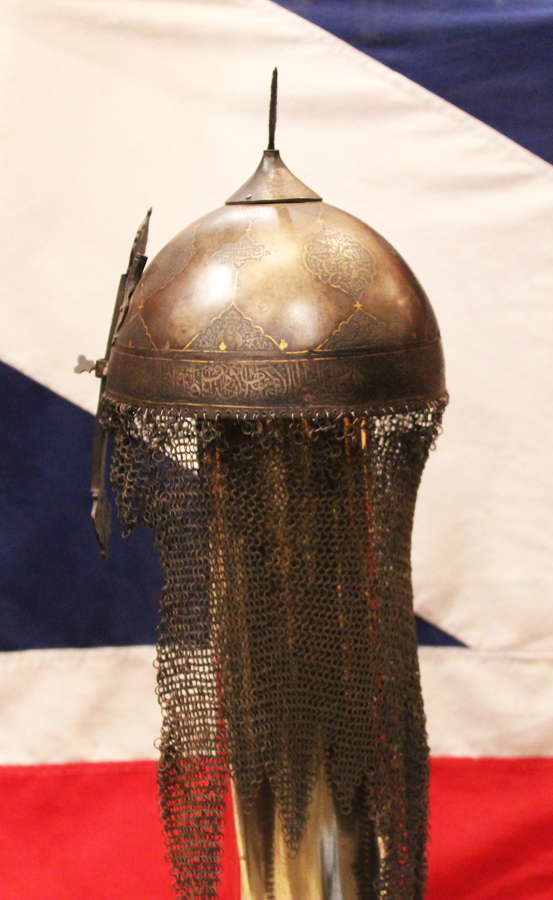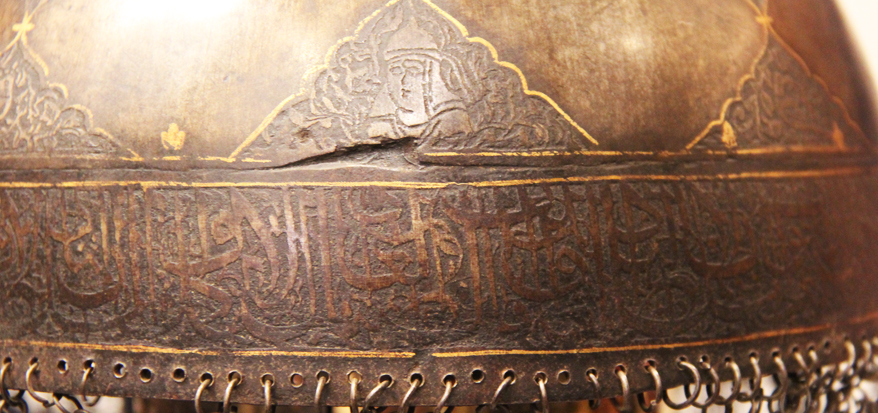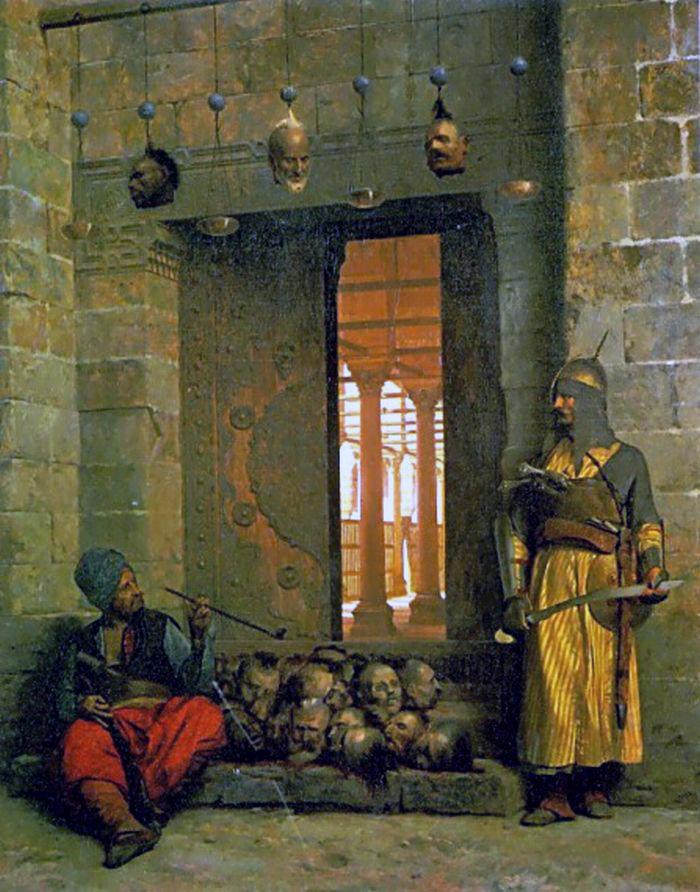A Simply Stunning And Historical Persian Kulah Khud Helmet, Qajar Era, Surmounted with an Ancestor's War Trophy, A 12th Cent. Crusaders Arrow, To Represent the Traditional Kulah Khud Helmet Spike
A fabulously beautiful 18th to 19th century helmet, crowned at the peak with an surmounted battle souvenir of an original Crusader's arrow head from the victory of Saladin's army at the Battle Hattin in the 12th century.
The helmet of hemispherical form, the brim hammer welded to the bowl, fitted at its apex, with a moulded base, with the arrow head, and at the front a sliding nasal bar secured by a thumb-screw and with a plume-holder on each side, decorated throughout with a framework of gold cartouches filled with mounted warriors and calligraphy, the brim encircled by a calligraphic panel of text from the Koran, framed by gold lines, and lamellar mail neck defence of butted links, with a small resin repair. The apex of the helmet bears a 12th century Crusader's iron arrow head, said by legend to have come from the booty of the Battle of Hattin, Saladin's great victory against the Crusaders. The Battle of Hattin took place on 4 July 1187, between the Crusader states of the Levant and the forces of the Ayyubid sultan Salah ad-Din, known in the West as Saladin. It is also known as the Battle of the Horns of Hattin, from a nearby extinct volcano.
The Muslim armies under Saladin captured or killed the vast majority of the Crusader forces, removing their capability to wage war. As a direct result of the battle, Muslims once again became the eminent military power in the Holy Land, re-conquering Jerusalem and most of the other Crusader-held cities. These Christian defeats prompted the Third Crusade, which began two years after the Battle of Hattin. The Crusader army was composed of knights from the: Kingdom of Jerusalem
Knights Templar
Knights Hospitaller
Order of Saint Lazarus
Order of Mountjoy.
The fitting of ancient relics within the warriors armour, from the greatest battles of Saladin, is a profound statement of connection the the historic past, we have seen once before on another very fine kulah khud helmet that we had about 15 years ago. Antique Arabian jambiya of the highest quality often have ancient Europen coins inset within their hilts for a similar purpose. The field restored chainmail has been repaired aroundthe equivalent area of medium sized coin, this could likely be fairly easily tidied much better.
Code: 21500
2250.00 GBP

